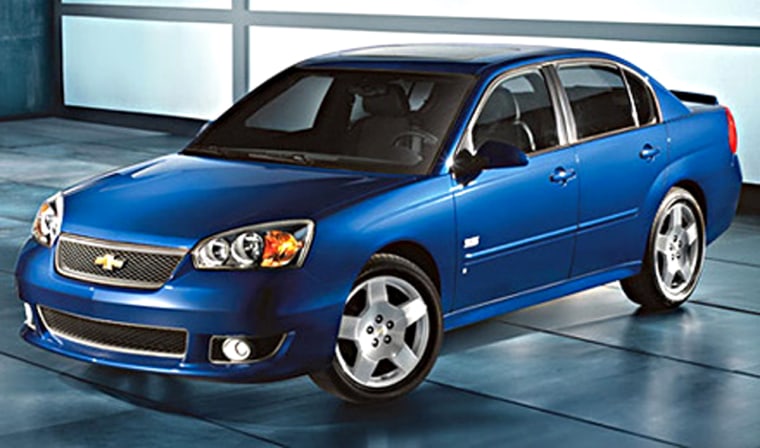At the highest echelons of the auto industry, a power war rages on. Even as gas prices soar, manufacturers large and small continue to up the ante, making engines bigger and putting more power under the hood. That's having an impact on cars of every type.
At the pinnacle of horsepower is the current Guinness World Record holder for speed in a production vehicle, the 245-mph, . However, it will be soon be dethroned by the even more powerful , the current grand master of the auto universe.
Sure, both come with hefty price tags — anywhere from $700,000 to more than $1.4 million _ but there are also galloping examples in more affordable price brackets. The brand-new, 500-hp costs a mere $42,975, and speedy 2006 power hatches from Honda and Volkswagen come in at nearly half that price.
In fact, according to the Union of Concerned Scientists, over the past two decades there's been an 80 percent increase in average engine power relative to a comparatively minor 25 percent increase in weight. That means more performance-per-pound than ever before for average American auto consumers.
With more and more cars packing a titanic punch, performance-oriented competition has increased. So much so that models that can't keep pace run the risk of coming off, well, wimpy. BusinessWeek.com took a look at the 2006 models that could take inspiration from the CCR and Veyron, or even the relatively inexpensive models, and boost power to better compete.
BusinessWeek.com analyzed base models. Some of the cars on our list can indeed be optioned up into significant performers. But the models chosen have trouble keeping pace with other base-trim vehicles in their peer groups. Because "lackluster" isn't always simply about lack of horsepower, handling, ride, cabin quality, fuel economy, and intended utility were also taken into consideration.
Easiest to peg as power-lacking are vehicles now arriving on American shores as part of a new class of small, efficient subcompacts — intended, no doubt, to be the answers to nationwide gas-price woes. One prime example, and a model just introduced, is Toyota's minuscule Yaris, which comes with a paltry-sounding 106 horses. But in a class where most engines pump out around 100, the Yaris is capable of holding its own — especially given the up-to-date interior and forward-looking design.
Other models suffer competitively not because of their segment characteristics but because auto companies have neglected to refresh them. Examples include the aging Chrysler Sebring convertible, Ford Ranger truck, and Volkswagen Golf hatchback. Some such models are getting relief soon, but only after power and handling gaps have widened noticeably.
The major auto manufacturers have also recently added performance trim lines to popular cars to drum up excitement and additional profits. But that can make basic models look like a poor value in comparison. Compare, for instance, the Chevrolet Malibu with the Maxx SS version, which, while more expensive, has 60 percent more power from a bigger V6 with more torque.
Granted, in certain segments competition is particularly tough. Jaguar's X-Type, for instance, has to go up against power offerings from legendary sport performers built by BMW, Cadillac, and Mercedes-Benz. Equally, the Mitsubishi Montero and Buick Terraza are in the crowded sport-utility and minivan spaces, respectively.
To see a slideshow of the wimpiest cars, click .
